Blue Grama
Blue grama grass is a low growing, warm season bunch grass native to the central US. It can be used as a low water lawn in low-traffic sites in the Colorado Springs area.
Blue grama is one of the most common native grasses of the short grass prairie and has been designated as the state grass of Colorado because of its widespread distribution and importance.
During its active growing season from mid-May through early October, its fine blades are a light green color. In August, attractive seed heads form if left unmowed. During the winter, it is a light tan color.
It uses one-third of the water of a traditional Kentucky bluegrass lawn and is very drought tolerant. Blue grama does not recover well from heavy foot traffic.
Because it is a bunchgrass, it mixes well with wildflowers.
.jpg)
.jpg)
.jpg)
.jpg)
.jpg)
.jpg)
.jpg)
.jpg)
.jpg)
Blue Grama
Blue grama grass is a low growing, warm season bunch grass native to the central US. It can be used as a low water lawn in low-traffic sites in the Colorado Springs area.
Blue grama is one of the most common native grasses of the short grass prairie and has been designated as the state grass of Colorado because of its widespread distribution and importance.
During its active growing season from mid-May through early October, its fine blades are a light green color. In August, attractive seed heads form if left unmowed. During the winter, it is a light tan color.
It uses one-third of the water of a traditional Kentucky bluegrass lawn and is very drought tolerant. Blue grama does not recover well from heavy foot traffic.
Because it is a bunchgrass, it mixes well with wildflowers.
Plant details
Botanic Name
Bouteloua gracilis
Pronunciation
boo-te-LOO-uh GRASS-il-is
Mature Height
6 to 18 in.
Mature Spread
12 to 18 in.
Water usage
One Droplet: Water twice per month or less, once established.
Two Droplets: Water about once per week, once established.
Three Droplets: Water about twice per week, once established.
Flower Color
negligible
Bloom time
mid-August into September
Colorado Native
Yes
Natural Habitat
North America
Light Requirements
sun
Cold Hardiness
USDA zones 4-9
Elevation Limit
hardy to 7,500 ft.
Performance
There are three areas of blue grama grass at the Water Wise Demonstration Garden. One area is a mixture with buffalograss and maintained as a "lawn." The second area is a naturalized slope that is not mowed. The third area is a lawn area with blue grama alone.
All three areas have performed beautifully for many years. There is also an attractive stand at the Cottonwood Creek Demonstration Garden. Blue grama is a fantastic option for a water conserving lawn or natural area.
Maintenance
This grass makes an attractive "natural" lawn if left unmowed, but will tolerate mowing several times per year to keep it shorter.
Because of its slow growth rate, mowing can be reduced to two or three times during the growing season. If left unmowed, mow it once in February to remove the old growth.
Blue grama can be watered once every 7-10 days during the summer to maintain its green color, or it can be watered only during extended dry spells. If not irrigated, it will go dormant (turn brown) when there is no rain. Fertilize with 1/2 lb. of nitrogen per 1000 square feet once a year in June.
When establishing a blue grama lawn from seed, take extra care to eliminate weeds before seeding, and keep the area well weeded after seeding. Plan to seed in mid June to early July.
See in a landscape
This large backyard backs up to a golf course and was previously over 3000sqft of Kentucky bluegrass. Since the backyard received little use, the high water-using bluegrass was converted to Colorado's state grass, Blue grama, and saves about 60% of the water. Many of the plants in this landscape are xeric plants that compliment this native turf well and fit right into the surrounding Colorado backdrop.
With a yard this big, designing for low maintenance and water conservation can be a real challenge. But this homeowner and garden enthusiast was up for the challenge. A large patio was installed to both accommodate outdoor entertaining needs and stay in scale with the large size of the backyard. The beds surrounding the patio are planted with flowering perennials adapted to our climate, watered with drip irrigation and mulched to retain moisture. Because the grass in this yard has only occasional foot traffic from visiting grand kids, part of the Kentucky bluegrass (darker green) was kept and the rest was converted to blue grama (lighter green). However, after experiencing the benefits of blue grama for a few years, the homeowners have decided to convert the entire grass area to the native blue grama. To access the gate to the alley, they mow a path in the tall blue grama.
Xeriscape is a great opportunity to showcase plants with different colors and textures. This yard uses ornamental trees, evergreen shrubs, striking ornamental grasses and a native grass lawn to breathe life into a yard that used to be all Kentucky bluegrass. The parkway strip is home to the existing juniper that has been partnered with large maiden grasses and a pathway which accommodates foot traffic from the street parking. A native grass turf covers about half of the remaining yard with planting beds around the perimeter that feature low water perennials, grasses and groundcovers.
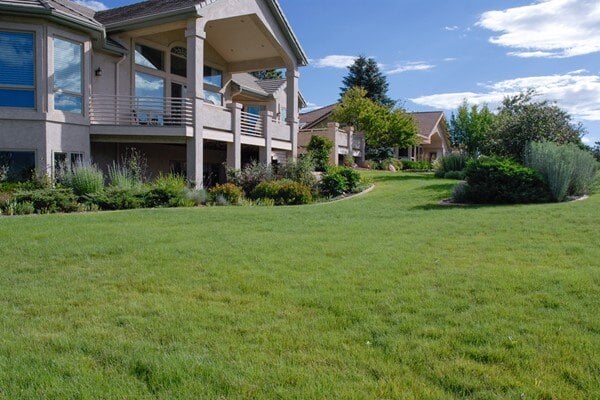
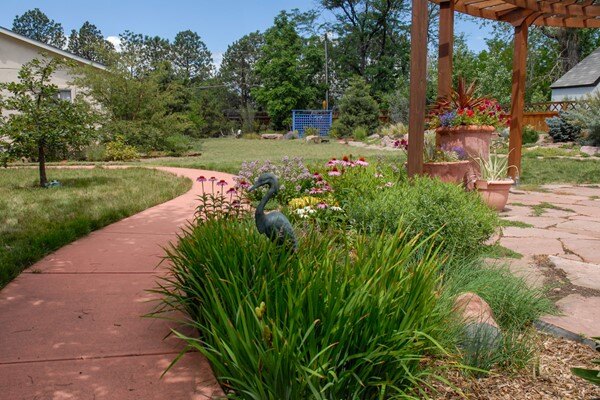
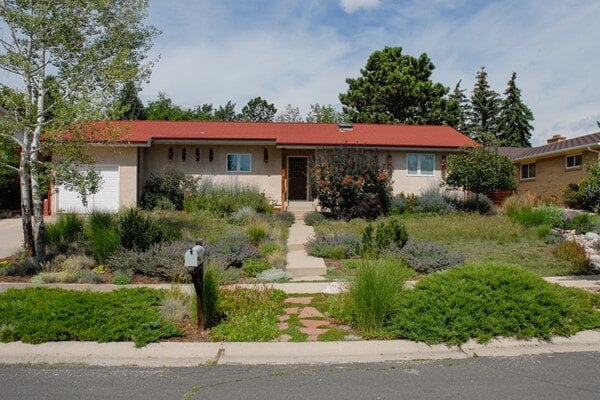
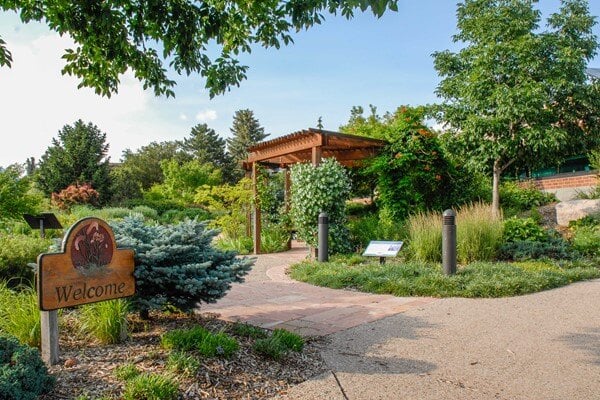
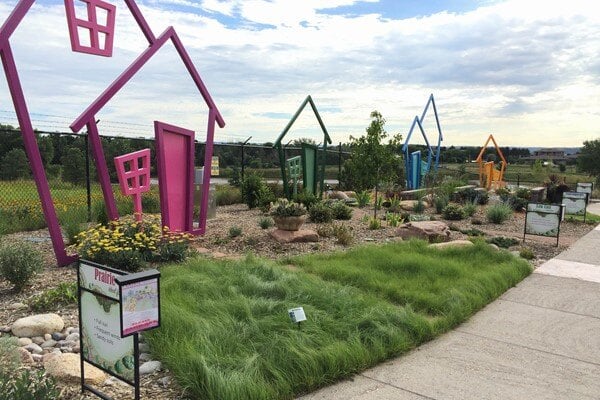
.jpeg)
.jpeg)
.jpeg)
.jpeg)
.jpeg)
.jpeg)
.jpeg)
.jpeg)
.jpeg)
.jpeg)